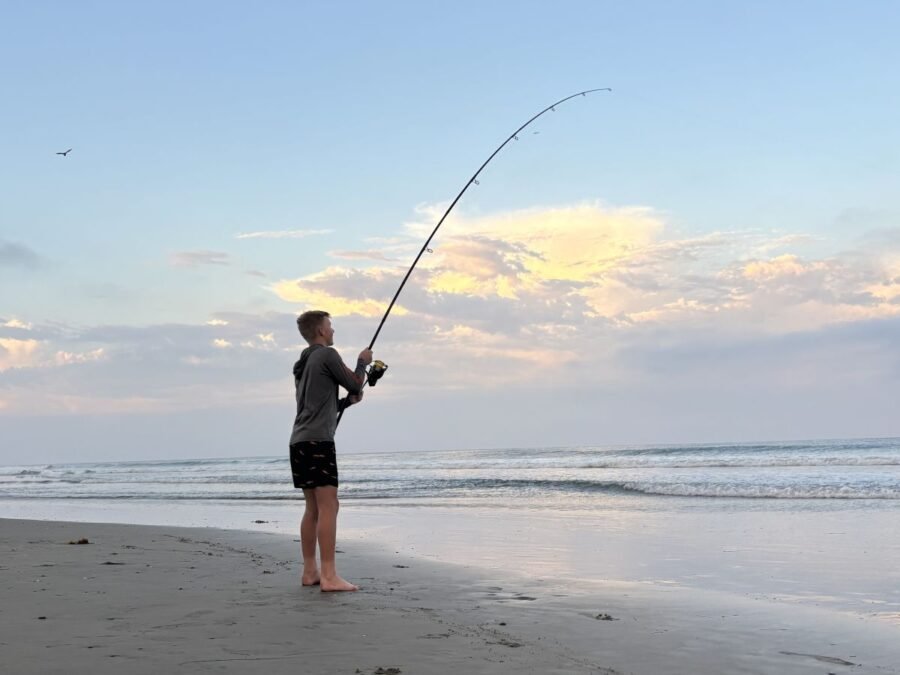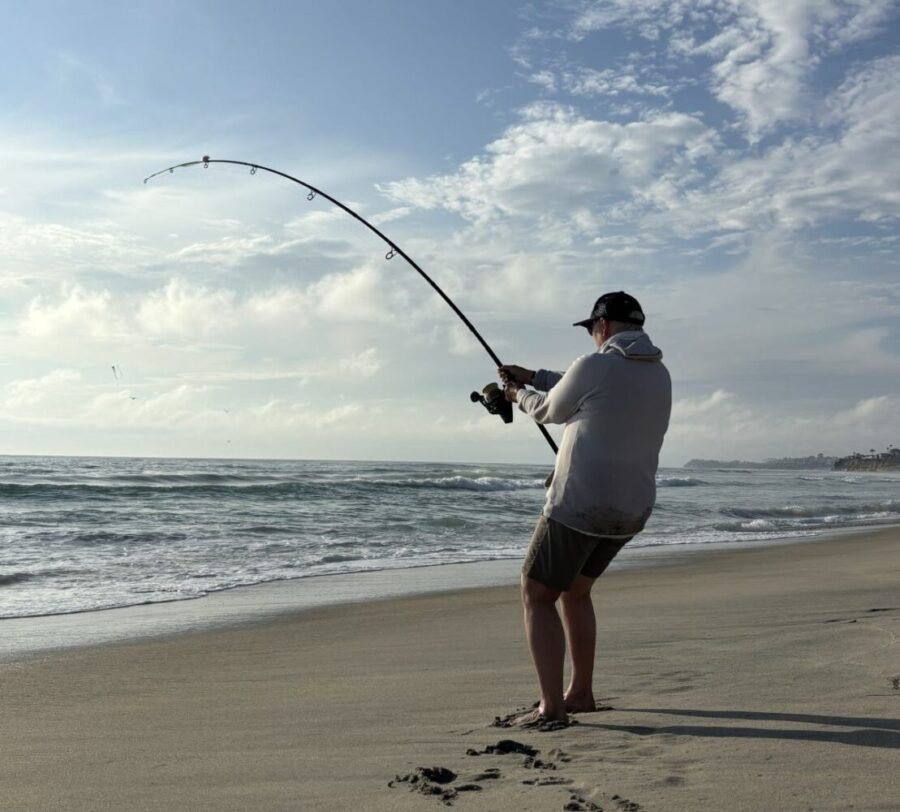Surf Fishing Mistakes: 5 Habits You Need to Break

Surf fishing is one of the most exciting and accessible ways to fish in Southern California, but even experienced anglers make avoidable mistakes that cost them fish (and reels). Over years of fishing and guiding, I’ve seen the same errors repeated again and again on the beach. The good news is that with some small adjustments, you can drastically improve your hookup ratio and landing percentage.
Here are the top 5 surf fishing mistakes I see most often and how to fix them.
1. Setting the Hook Too Soon
One of the most common mistakes in surf fishing is reacting too quickly. Anglers who come from a bass fishing background are especially prone to this because bass fishing rewards aggressive, instant hook sets. But in the surf, species like corbina, croaker, and surfperch are notorious for tapping, nibbling, and testing bait (sand crabs) before committing.
When you feel a single tap or two, resist the urge to swing. Wait until the bites become quicker and more consistent, usually a “tap-tap-tap-tap” accompanied by steady pressure on your rod tip. That’s when the fish has fully taken the bait, and it’s time for one clean hook set. Patience pays off here.
2. Setting the Hook More Than Once

Once you’ve set the hook, don’t set it again. Many anglers panic if the first set doesn’t feel solid, and they rip again. The problem is that every time you try to re-set, you create slack, then reapply sudden tension. This is one of the best ways to lose a fish and I see YouTubers and other people do this a disgusting amount… be better than this.
Commit to one firm hook set, then focus entirely on maintaining tension and managing the fight smoothly. Even if the first set feels light, your odds are better staying tight and steady than trying to “fix” it mid-fight.
3. Managing Tension Incorrectly (Reeling Too Much)
Line management is critical in the surf. Too much slack and you’ll miss bites. Too much reeling and you’ll walk your bait right out of the strike zone. Many anglers instinctively reel whenever they see slack created by waves, but this constantly drags bait closer to shore.
Instead, manage tension with your rod. Lift the rod tip when waves push slack toward you, and lower it (or step forward) when the current pulls out. This way, your bait stays in the productive zone while still maintaining tesnion so you can detect bites.
4. Casting Too Far
A common misconception in surf fishing is that “farther is better.” Many anglers believe they need a 10-foot rod to sling bait beyond the breakers, but that’s not always the case. In San Diego especially, corbina and croaker often feed right in the skinny water, sometimes in water only ankle to knee-deep.
Many anglers strictly target fish in the surf by a method called sight casting. Take a look at my most recent video where I attempt sight casting for corbina in the shallows below.
In the next video below and article linked, I successfully go sight casting for a massive spotfin croaker.
Casting too far can actually put your bait behind the fish. Always read the beach first and look for troughs, seams, or foam lines close to shore. Some of the biggest fish you’ll catch will be just feet from where you’re standing.
5. Autoflipping Your Bail – Don’t Do This!
This mistake deserves its own category because it’s one of the most overlooked. Many new anglers force the bail on their spinning reel to auto-flip closed by reeling immediately after casting. While it feels convenient, this habit grinds the pinion gears within your reel and shortens the lifespan of your reel.
The fix is simple: manually flip the bail with your hand every time after a cast. This ensures your line lays properly on the spool and prevents future headaches. I wrote a full breakdown of this problem here: The #1 Mistake New Anglers Make With a Spinning Reel.
Final Thoughts
Surf fishing rewards patience, attention to detail, and good habits. By avoiding these five mistakes, you’ll put more fish on the sand and enjoy smoother, more consistent sessions.
Tight lines, and remember: every trip to the surf is a chance to learn, adjust, and get better.
Good morning Nick, thanks for the coaching, have a peaceful week my friend…✌
You too, Richard!
Thank you Nick, this is great information. I’ll definitely follow your page here as I think it’s great that your passing on your knowledge. Can’t wait to get back out there and put it to use!
Thanks so much for your support! Helps me keep pushing.
thank you for that I been using penn pursuit lll 3000 and I use 30 pound braid and 12 pound mono and 12 pound mono
The pursuit 3 is still a decent reel. Battle and spin fisher are for sure steps up but the pursuit does have instant antireverse and I think they’re decent so long as you take care of them. I’d stick with mono for your like tho. 12-15lb is good
Any go to baits your preferred
Sand crabs are number one. Here are three of my relevant articles on alternative baits to them tho:
1) alternative baits to sand crabs: http://surffishingsocalsd.com/best-surf-fishing-bait-alternative-to-sand-crabs/
2) surf fishing with mussel meat: http://surffishingsocalsd.com/surf-fishing-with-mussel-meat/
3) everything about sand crabs: http://surffishingsocalsd.com/sand-crabs-are-back/